During the months of lockdown in Madrid, I often lingered in day dreams of swimming in the sea. It seemed like the most free you could be, feeling weightless and having the entire ocean in front of you. I longed for that feeling of open, boundless nature.
In July, we took a car trip to Galicia. There is much to be said about Galicia – the seafood, the rolling green hills, the delightful Celtic influence, and the extra-friendly people to start. But one of the places I wanted to visit the most was Las Ciés Islands off the Atlantic coast just above the border of Portugal.
A student of mine first told me about them during class last year. “It’s Spain’s Caribbean,” he told me, “with the most beautiful white sand beaches in the country.” I had never even heard of them after a lifetime of coming to Spain and then living here, but it intrigued me to no end.
The Romans called them 'The Islands of the Gods', and legend has it even Julius Cesar visited. They left behind artifacts such as ceramics and amphoras which can be seen at Pontevedra’s Museum on the mainland.
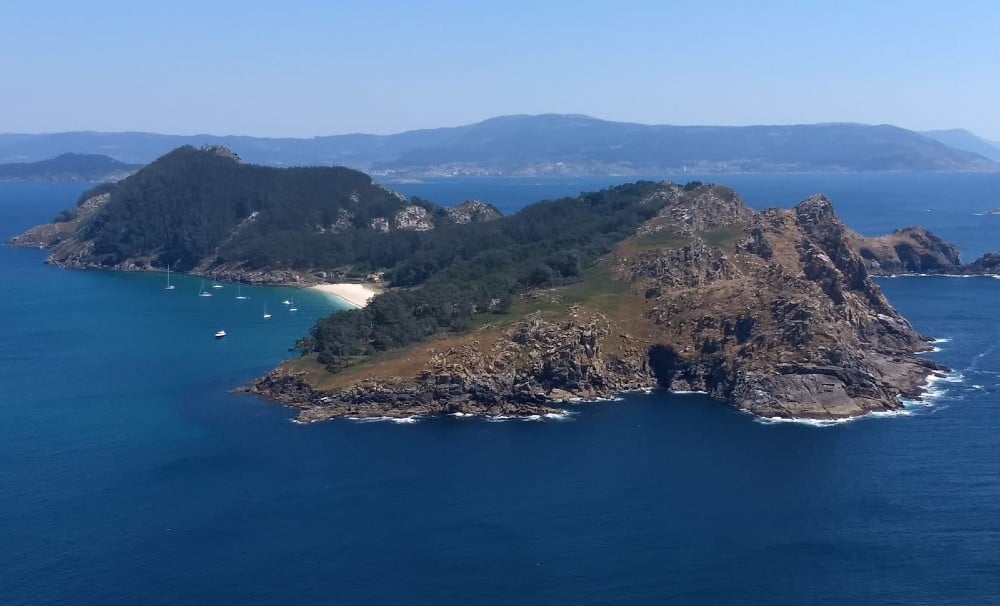
But they were inhabited per archeological evidence as far back as 3500 BC, with several fortified Celtic settlements from the Iron and Bronze ages. In the medieval era it became a haven for monks and hermits, but then abandoned by the 18th century to pirates and invading armies. Finally, it became home to fishermen and cattle ranchers and the four lighthouses were built in the 1800s.
Due to the eventual deterioration it suffered from human activity, it was declared a natural reserve in 1980 and a National Land-Marine Park in 2002.
For that reason, the amount of visitors is controlled. In order to reserve your spot, you must go online and find an open day, get a registration number, which you then use to buy the ferry tickets (about €18). This ensures not only that these islands continue to be stunning and pristine, but that your visit will not be overcrowded and unpleasant.
The Ciés consist of three islands, Isla do Faro (Lighthouse Island), Monteagudo (Sharp Mountain) and San Martiño. The first two are connected by a causeway and a wide sandy beach and this is where most visitors go, as did we.
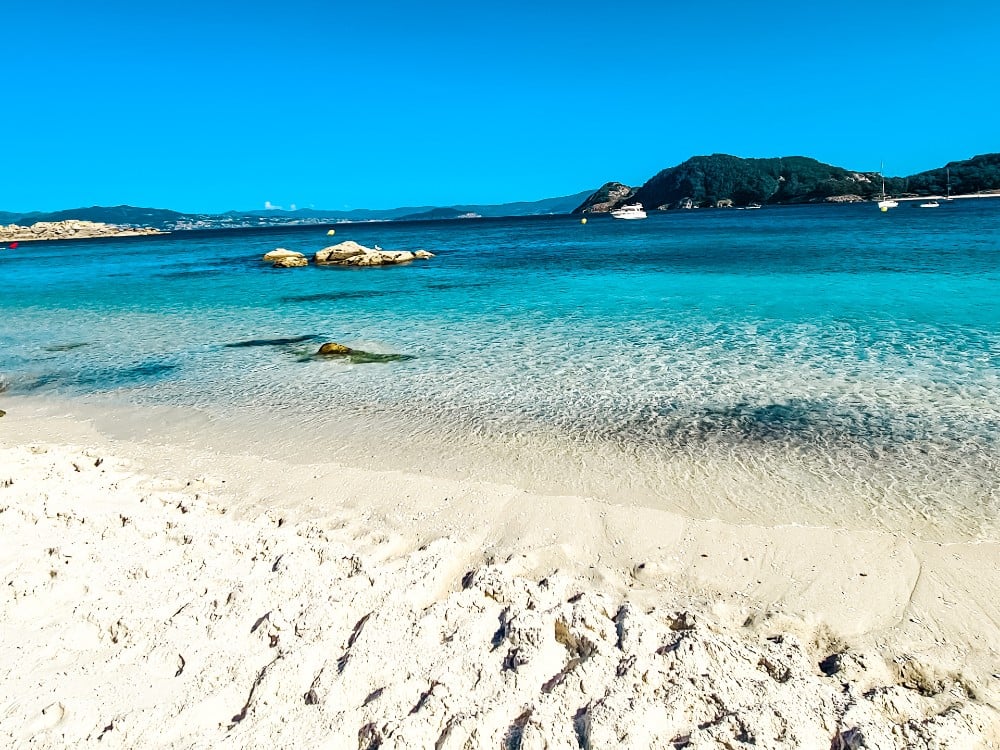
It is possible to camp there as well. You can bring your own equipment or rent theirs. The camp grounds were clean and well-run. There are no waste bins on the island, you are required to take your litter back with you.
We reserved our outgoing ferry for 13:00 with the return at 20:15. This left plenty of time to have lunch, explore and hike up to the famous views, and spend a good amount of time on the beaches.
We took the ferry from Vigo, which has an oyster market right by the port. We arrived a bit early to enjoy some fresh oysters and crisp local white wine. It was a beautiful sunny day, so the sea was flat on the ferry out there. I noticed a massive bundle of garlic hanging off the mast and asked a steward what was for. Obviously, it was to ward off bad luck and ensure a safe passage.
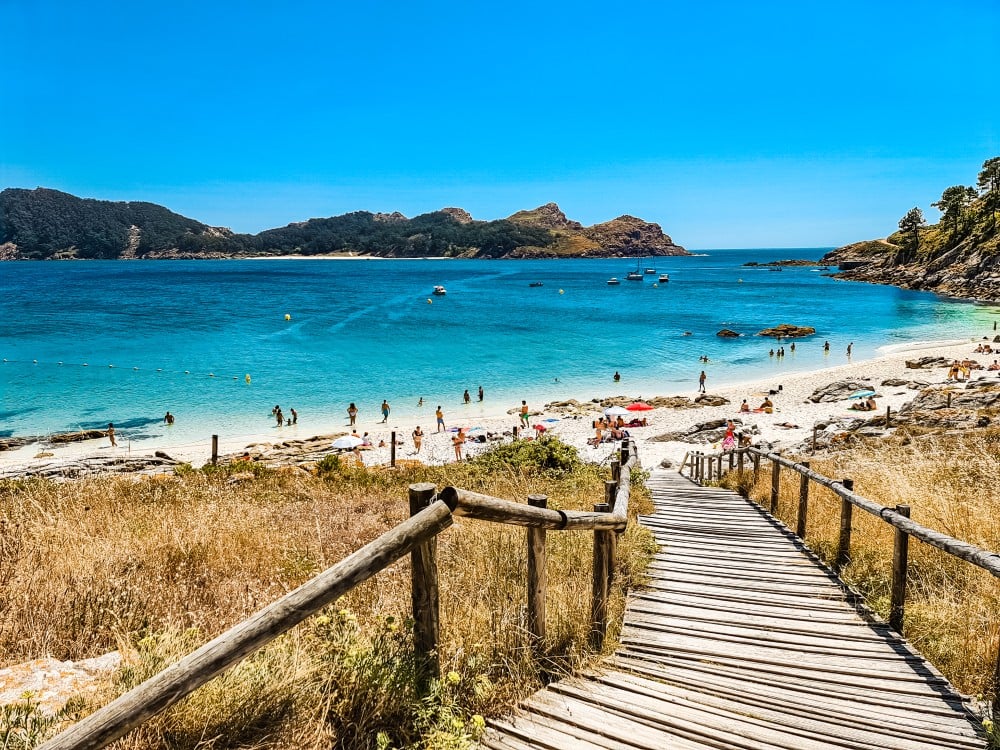
Once we arrived it was about 14:00 and time for lunch. In retrospect, I would have packed our lunch, but there are two restaurants. The first one is right by where the ferry lets us off, and everyone made a beeline for it. I grabbed seats outside with a view of the turquoise, almost glowing water in front of us. It did indeed look like the Caribbean. The line for lunch was super long and it took quite a while to get the food. It was also quite expensive, but the food was good. There is also, of course, a full bar there and ice-creams.
Then came the Gladiators. By the time the plates of fish and steak and French fries were being set down on the outdoor tables, we were slowly surrounded by an army of Hungry Seagulls. Fearless, or almost, they waited for one wrong step, for one person who hadn’t guarded their plate with enough dominance, or anyone who looked weak.
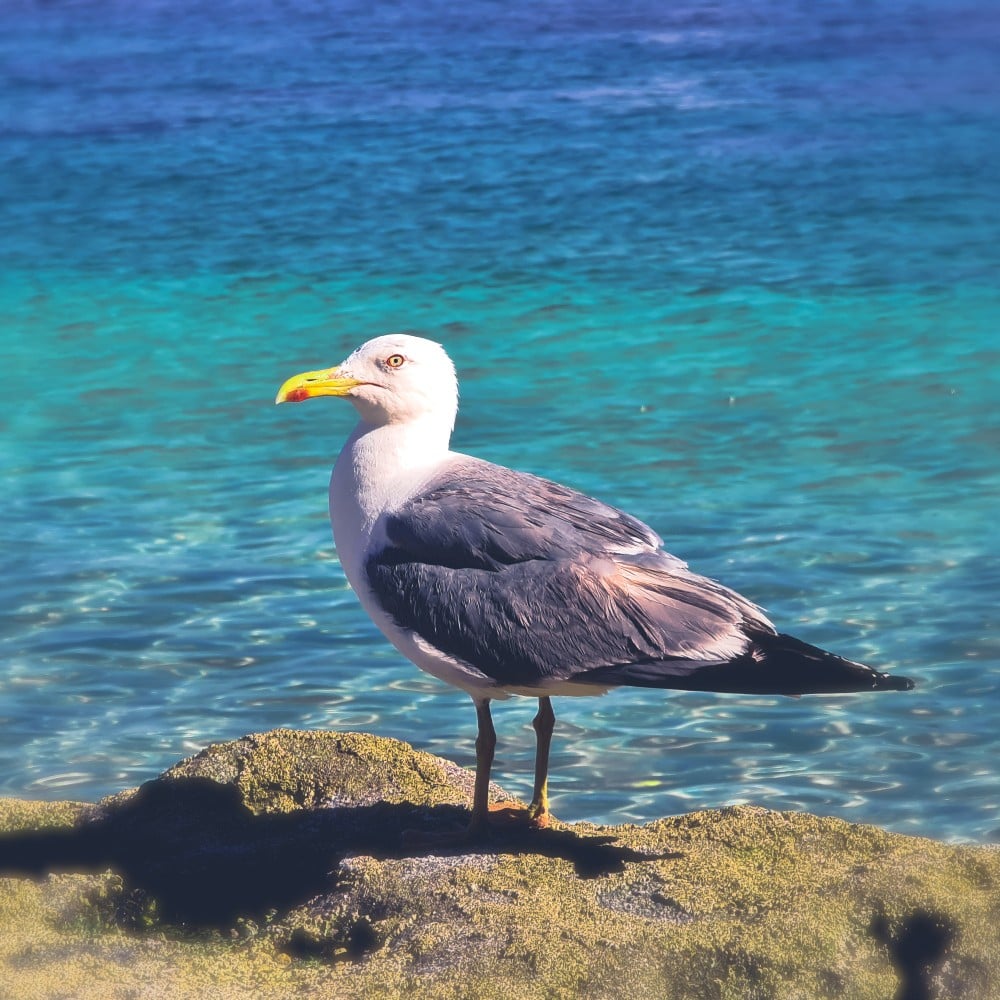
Shrieks broke out as they dove at certain tables. They quickly figured out who would run screaming away and who would fight back. One elderly lady was sitting alone and a seagull landed coolly on her table, scattering dishware as she screamed in fright. I grabbed my sweatshirt and jumped up to help her by swinging it at the bird and yelling at it. It took a lot of persuasion but it left. While I was up, a seagull took the opportunity to go for my plate of food, making my friend in turn have to fight that one off while I was gone. It was madness, and very fun.
After lunch we decided, though now in the heat of the afternoon, to hike up to see the views. It was very hot. This is not all the usual for this place, but it was July. We made sure to bring plenty of water. I might have switched around the beach time with the hike, but either way it was all amazing, if sweaty going. There are lifeguards on duty on the main beach, and we had a signal on our phones the whole time, so as long as you keep hydrated, it is perfectly safe to wander around the islands.
We stopped for cold beers at a tucked-away little stone house with a garden and sea view. We were the only ones there and chatted with the woman who runs the bar. She comes and lives on the island for the season, although this year it will be much shorter. No one lives on the island in the winter. In my starry-eyed visions, I pictured living there, even in the ubiquitous rain and wind, but there would be cozy fireplaces and peaceful, quiet afternoons of bucolic splendour. It must be simply wonderful to live here, I gushed. The woman shrugged.
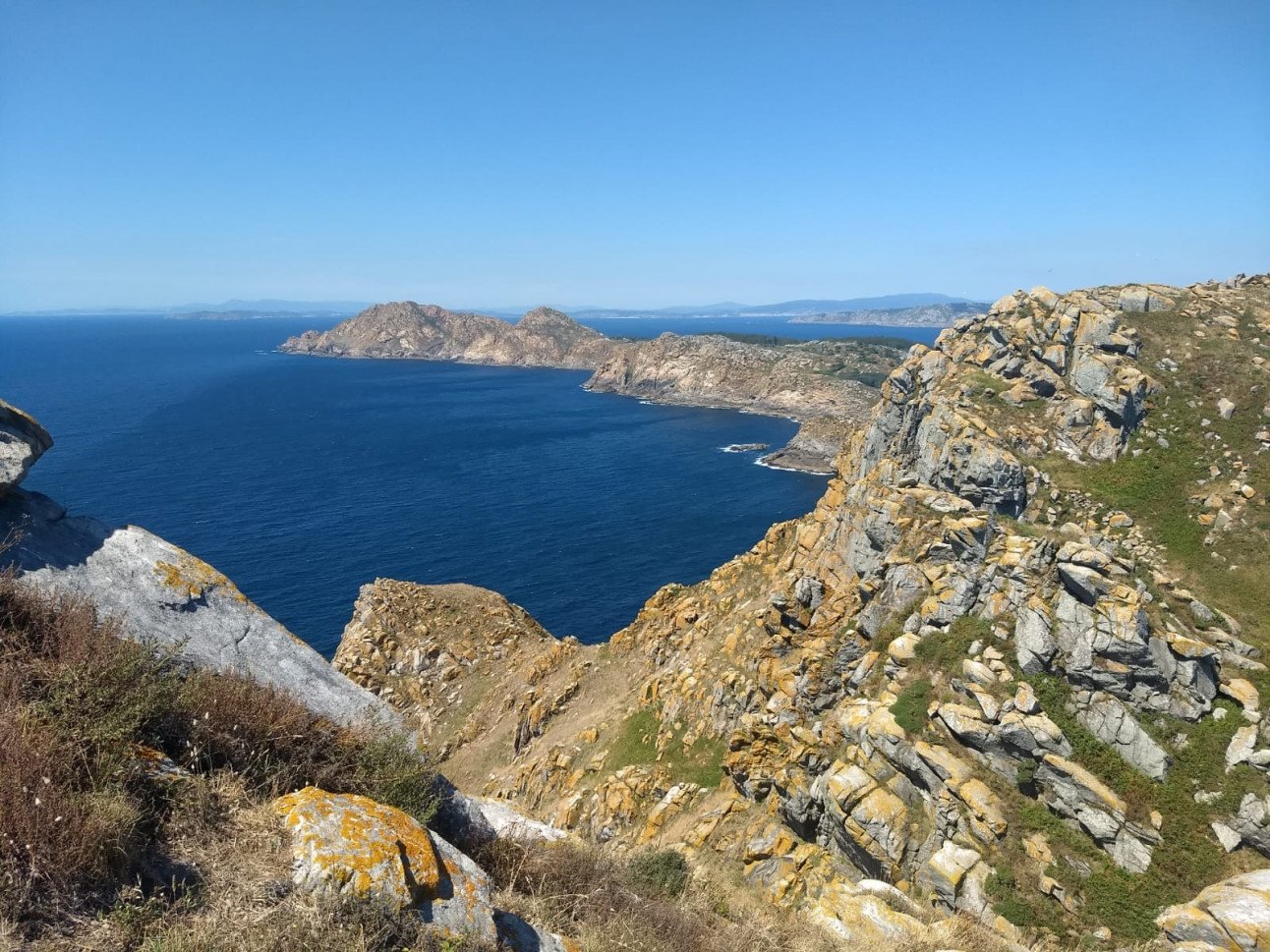
The rewards for the hike were spectacular. The views, magnificent. All of the adjectives. But the highlight for me was the small cove of pale sand we went down to. It is not the big, wide beach you see upon arrival (Praia de Rodas). It is called Praia de Nosa Señora and is past the campground, up about 1km and then you can see it and walk down.
I ran straight in, not only hot from the hike, but longing for the sea from lockdown, longing for the cold water and freedom. The sand was soft and fluffy, with piles of tiny seashells and mollusk covered rocks. Little white fish darted around and the surf lapped gently. The water was ice, ice cold. Three ices. It was so cold my friend put his feet in up to his ankles and like a good Spaniard who hates anything remotely cold on him, backed right out, never to return. Instead he baked like a lizard on the beach, and annoyingly turned a beautiful deep brown in only a couple hours, achieving the sort of tan I can only wish for.
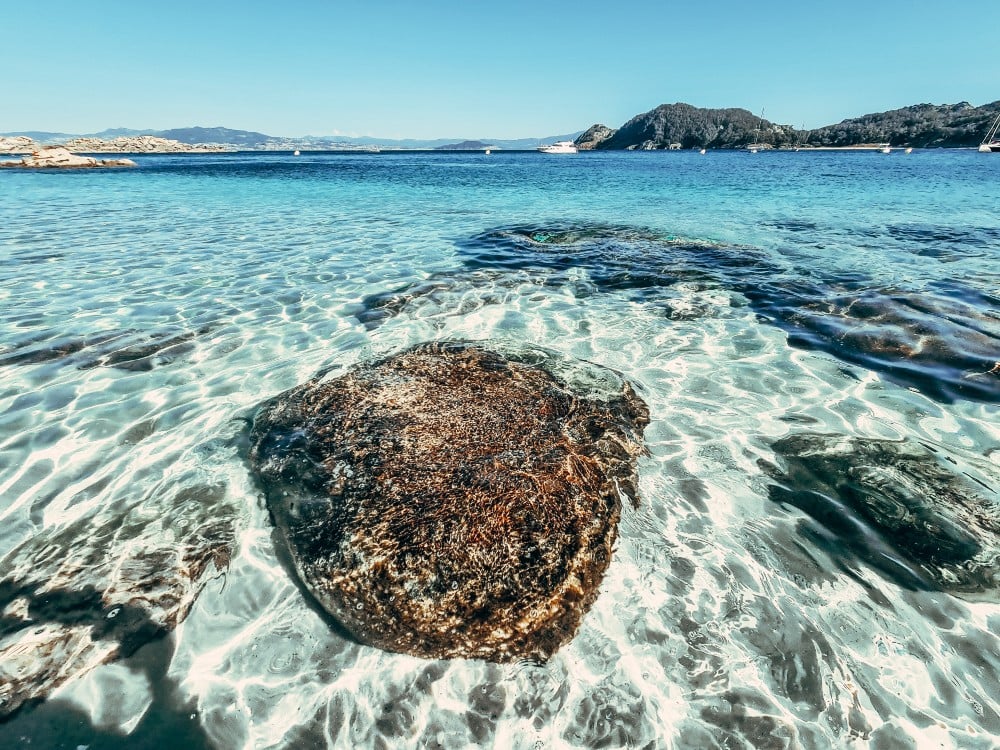
But I was so happy in my ice bath. It was the kind of cold where you have to keep moving for the first few minutes after an initial gasping for air. I made myself dunk under as fast as possible then swim around in circles to keep my blood flowing. It looks like the Caribbean, but it doesn’t feel like it.
Nonetheless I was determined to stay in. There were other people getting in as well and even some people jumping off a rock for a while. It was possible to get used to the temperature. In fact, I did eventually stop feeling it. I think my blood finally froze to the same temperature but in all honesty I couldn’t feel the cold anymore. Then it was blissful.
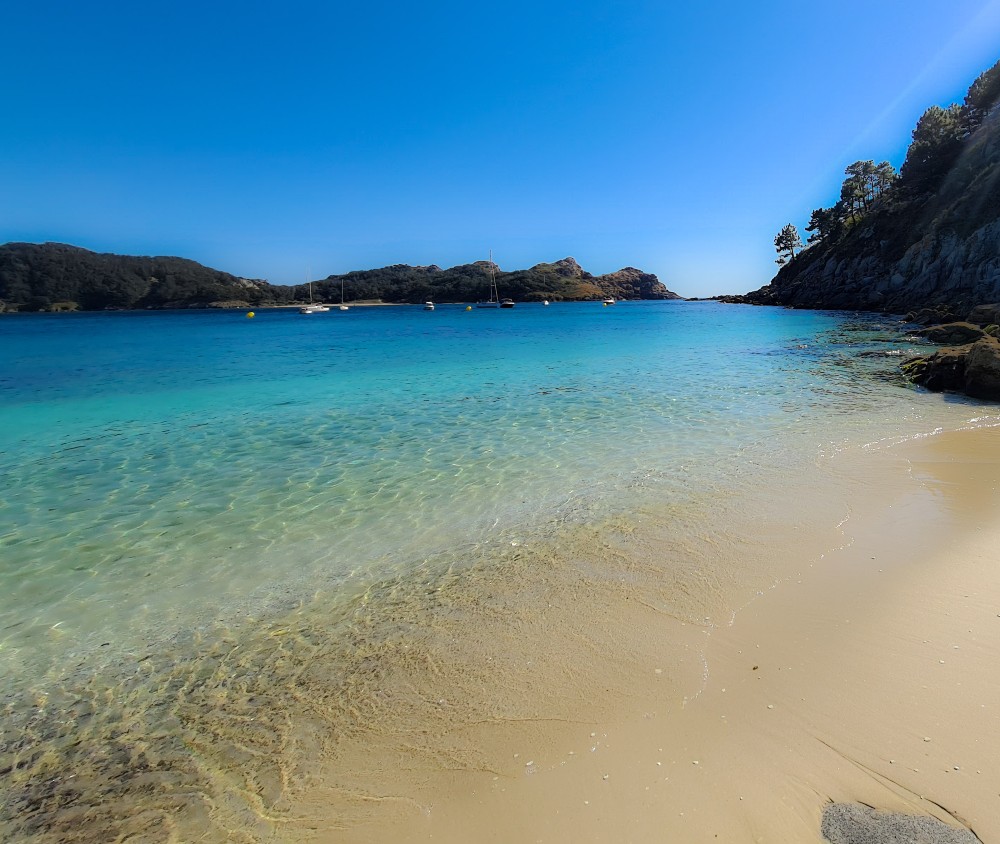
I collected bits of sea glass, I lay on my stomach in the soothing waves, not thinking about anything in particular, I did somersaults and dives in waist-high water. I swam out into deeper water, still crystal clear, and hung there floating, feet dangling, taking in the sun, the wide blue skies, the seagulls weaving above, and the fish wandering by below. I felt something deep within heave in relief.
It was exactly what I had dreamed of all of those months while locked away - I knew the sea would save me. The Ciés Islands could not have been more heavenly or more perfect to that end.
Deirdre Carney is an American writer, photographer and English teacher living in Madrid. For more, follow her on Instagram and visit her website.
READ MORE:
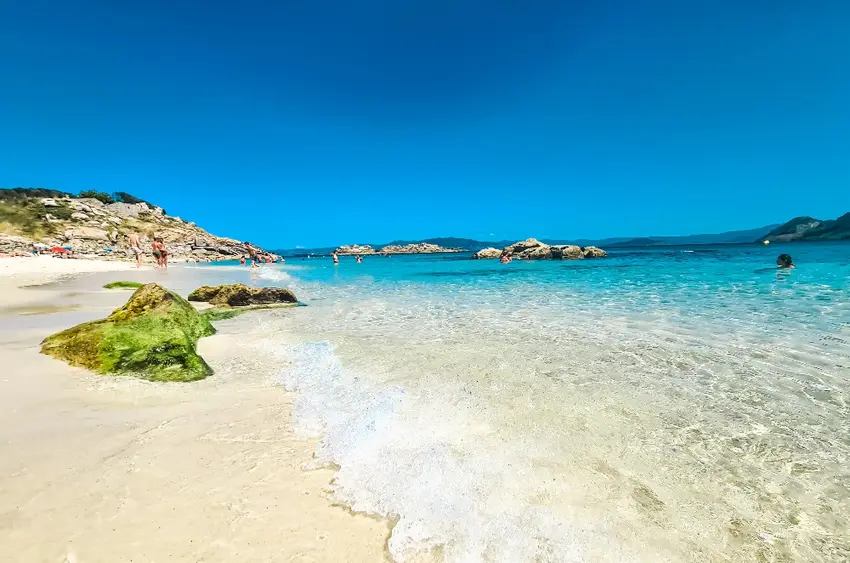
Comments